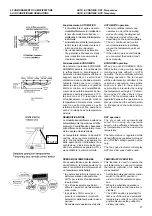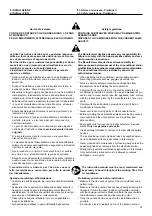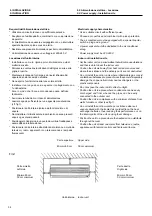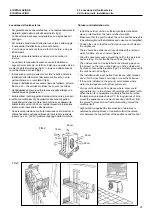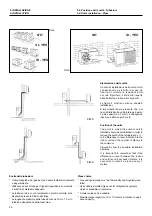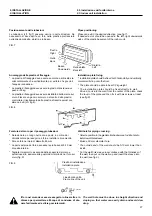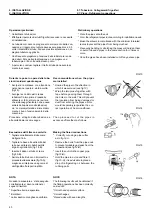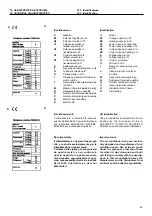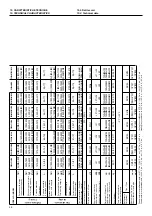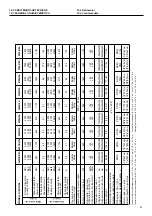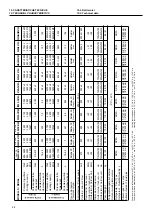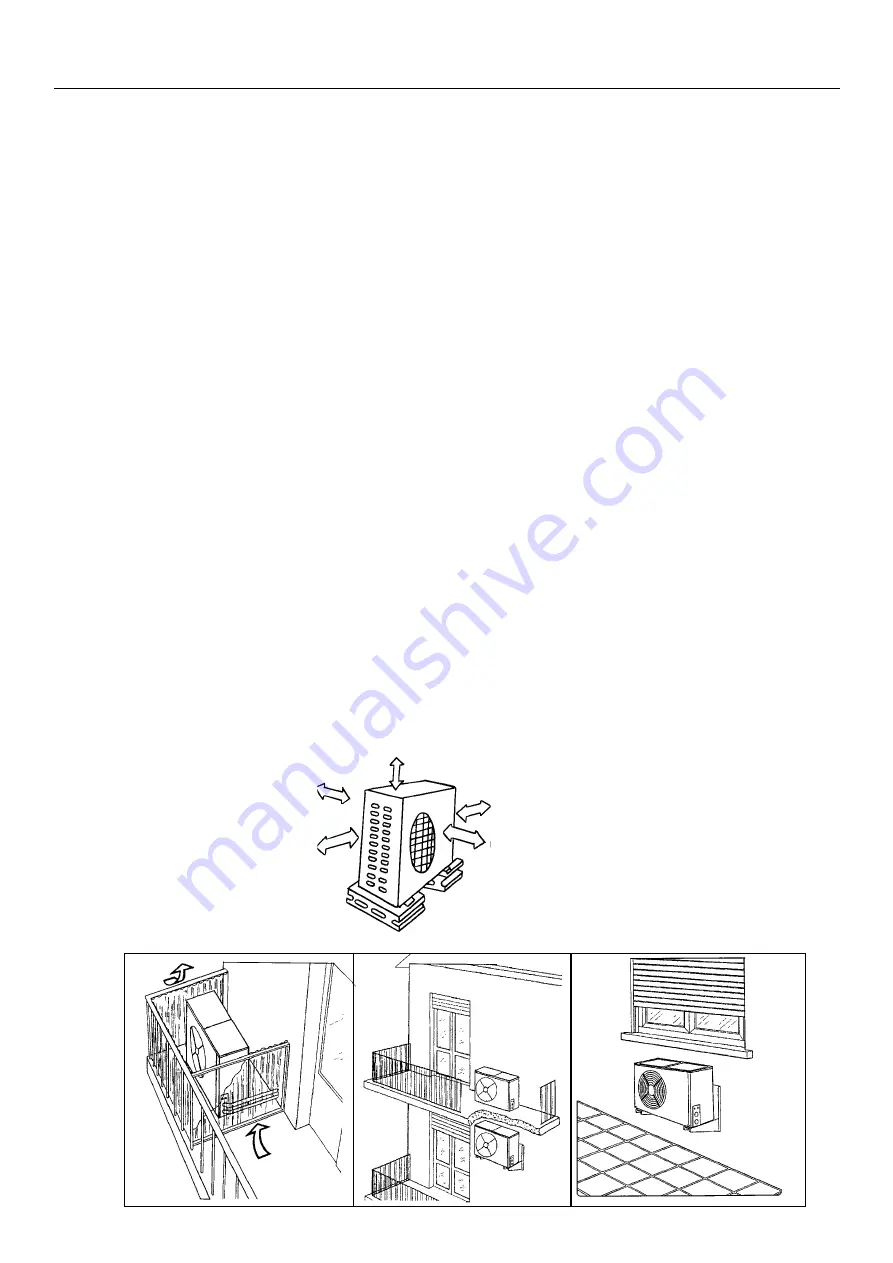
* Per garantire una buona ventilazione, e` necessario lasciare certi
margini di spazio attorno all'unità esterna (cfr. fig.2).
* L'unità esterna deve essere installata su una rigida base di
appoggio.
* Per evitare esposizione diretta alla luce solare e alla pioggia,
é necessaria l'installazione su di una mensola.
* L'unità deve essere lontana da fonti di calore e da gas
infiammabili.
* Evitare di procurare fastidio ai vicini per l'aria calda o il
rumore.
* Le unità motocondensanti possono venire installate nei
seguenti modi: al suolo, su tetto, su balcone, su parete esterna
mediante stafe dimontaggio (fig.3), in insiemi multipli situando
le unità schiena a schiena (fig.4).
* In presenza di venti prevalenti, orientare la parte posteriore
(batteria) dell'unità motocondensante controvento, non la
parte anteriore con i ventilatori (fig.5).
* Il luogo di installazione deve essere libero da fogliame, polvere,
filacce, ecc... che potrebbero intasare o coprire le batterie.
* Se l'installazione é al suolo, evitare le zone soggette a ristagno o a
caduta d'acqua da grondaie, ecc... .
* Evitare altresì i punti soggetti ad accumuli di neve (es. in angoli
di edifici con tetti spioventi). Soprattutto nelle zone soggette a
precipitazioni nevose, montare la macchina su un basamento
sollevato dal suolo di 20-30 cm cosí da impedire la formazione
di accumuli di neve attorno alla macchina.
* Una elevata protezione contro la trasmissione di vibrazioni si
ottiene fissando degli appositi tasselli in materiale resiliente
(neoprene, ecc...) sotto i piedini di appoggio della macchina.
* Install the outdoor unit in a sufficient ventilated, sheltered
place, protected from the rain and direct sunlight.
* Make sure that the point in which the unit is positioned is able
to bearits weight and that vibrations and noise are not amplified.
* Position the unit so that the air flow and noise do not disturb
the neighbours.
* There should be a distance all round between the unit and
walls, furniture, etc. as shown in figure 2.
* Allow the necessary space around the unit for the air intake
and servicing . Do not throttle the air flows (see fig.2).
* The outdoor units can be installed in the following ways: on
the ground, on the roof, on the balcony, on the outside wall,
by means of assembly brackets (fig.3), in multiple groups with
the units back to back (fig.4).
* The installation site must be free from leaves, dust, threads
and so forth, since these could clog or cover the batteries.
* If the unit is installed on the ground, avoid places where
water could stagnate or drop from gutters, etc.
* Also avoid installation from places where snow could
accumulate (eg.: in the corners of bouldings with gable roofs).
When there are considerable snowfalls in the area or when
the temperature remains below 0°C for long periods of time,
mount the appliance on a cement base rised 20-30 cm from
the ground to prevent snow from accumulating around the
machine itself.
* High protection against the transmission of vibrations is
obtained by placing blocks of resilient material (neoprene,
etc.) between the support feet of the appliance and the floor.
FIG.2
FIG.3
9. INSTALLAZIONE
9. INSTALLATION
9.3. Locazione dell’unità esterna
9.3. Outdoor unit installation site
60 cm
50 cm
15 cm
15 cm
60 cm
Locazione dell’unità esterna
Outdoor unit installation site
35







